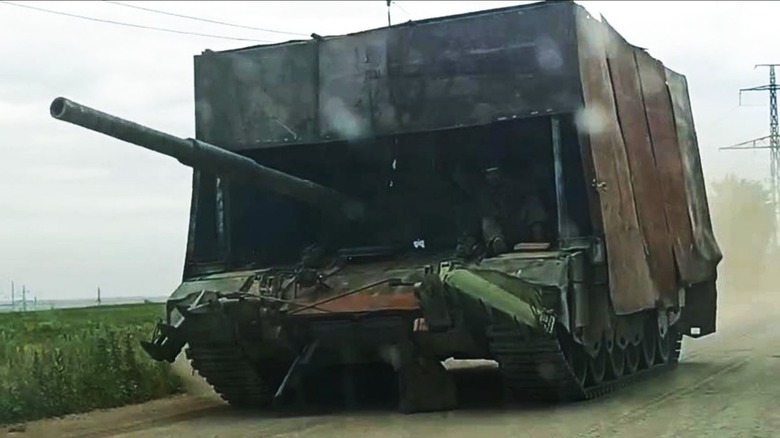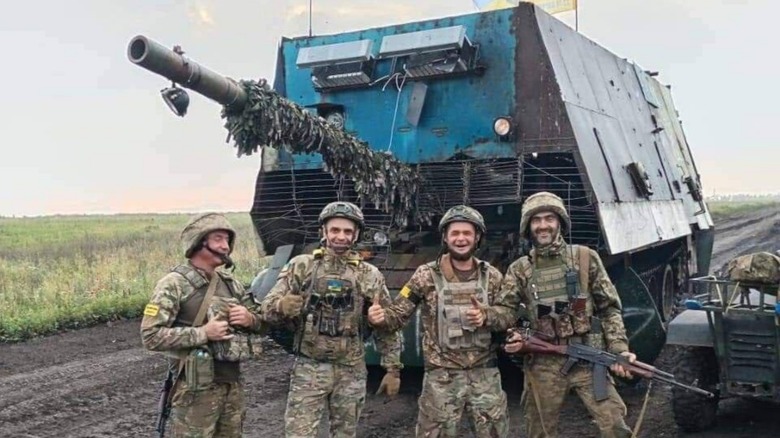What Are The Cages On Top Of Russian Tanks For?
For most of their history, tanks featured a similar design. Granted, it took some time for tank design to evolve from clunky crawlers to modern marvels, but when you look at today's tanks, they have many things in common regardless of which nation operates them. One country that's done something a bit differently of late, though, is the Russian Federation, which welded massive metal cages and panels onto the tops of its tanks. This isn't some funky style choice; the cages are designed to thwart Ukrainian drones capable of dropping munitions onto the tanks.
This strategy has worked well for the Ukrainians, and Russia has had to counter it with old-school ingenuity. Tanks are typically heavily armored in only specific locations, primarily in the front and on the sides. You don't want to use the same thickness of armor all around, as it's usually unnecessary and adds to the vehicle's weight, slowing it down. Because of this, modern tanks like the top-tier M1 Abrams feature scant armor on their tops because, traditionally, they weren't struck there.
The metal cages Russia is attaching to its tanks are designed to combat the drone threat of dropped ordnance. They also protect from other types of anti-tank munitions that target tanks' tops, such as several types of man-portable anti-tank missiles. When ordnance strikes the cage, it detonates, creating a physical barrier between the tank body and the explosion. If they work correctly, the tank shouldn't be too badly damaged by the impact and blast.
Russia's Turtle Tanks of the Ukrainian War
The newly deployed cage systems earned some Russian armor the moniker of "Turtle Tanks" for their resemblance to big, slow turtles. But unlike their reptilian counterparts, the efficacy of the tank's "shell" remains in dispute when facing off against anti-tank weapons and single-use drones. Ukraine rigged up a type of drone that delivers a payload of thermite, which can melt through the armor, destroying or disabling the tank. And in mid-2024, Ukraine captured a Turtle Tank with a frame and metal plates all around its top and upper sides. As it has before during the war, Ukraine turned it around and began using the Russian tank as its own.
Regardless, Russia continues to outfit its tanks — primarily its older, Soviet-era ones — with metal cages. The tactic thus far has included tasking Turtle Tanks at the lead of armored assault columns that engage in hardened target areas. They've been seen with mine plows to tear their way through minefields, so there is some benefit to the added protection.
There are variations to the design of the casing, frame, and panels of the tanks Russia has outfitted with metal cages, and they appear to keep evolving. It's unclear if the strategy has proven worthwhile, and it's likely the Turtle Tank concept will reach a dead end of defensive improvement as Ukraine obtains more robust anti-tank weapon systems from its allies in the West.

